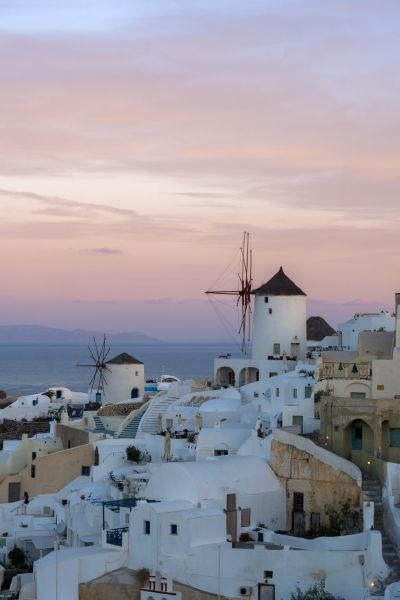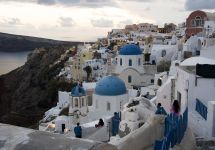The great Greek holiday - white-blue Cyclades in the sunlight
Anyone who has ever visited the Cyclades, knows that it is impossible to count there white houses with blue: roofs, shutters and doors. How do the locals explain their look?
There are three explanations, but none excludes the previous one. They are: practical, promotional and legal.
Practical
The custom of applying lime on Greek houses was in the old days a way to prevent the spread of cholera, which was decimating the population there. The hazard was so big that the dictator Metaxas even issued a special regulation on this matter. And despite the fact that the hazard passed over time, this custom of liming houses has preserved to this day.
According to other explanations - also pointing to practical considerations - since there is very little shade in Cyclades, the best way was to take advanatge of the following principle: dark colour attracts light, whereas light one - reflects it. In order to ensure a lower interior temperature, the inhabitants of Cyclades began to paint the exterior walls white. And the blue colour? Its role was to frighten mosquitos away.
Promotional
It was 1955 when Queen Frederick of Greece came up with an idea of advertising the Greek islands as a holiday destination. When she shared her idea with Prime Minister Karamanlis, she even had a ready design. It contained white houses against the blue sky and water. The idea was quite bold as Cyclades had not always looked like this. In the days when pirates were prowling in the vicinity of the Aegean islands, the typical houses were in stone colour. Secured by a fortress and built high in the mountains were supposed to provide a relative peace. Only when the level of safety increased, houses were built close to the water and additionally painted (in those days blue colour was particularly popular).
Legal
Here we need to refer to the regulation from 1972. Signed by Papadopoulos clearly states that buildings must be kept in white and blue colours (white walls, blue shutters, doors and balconies) to symbolically represent the colours of the state flag.
It is interesting to note that to this day a sale agreement of a house in Cyclades may include a provision about necessity to preserve white and blue colour. And what if somebody would like to change the colours? Then, the neighbours need to express their consent.














